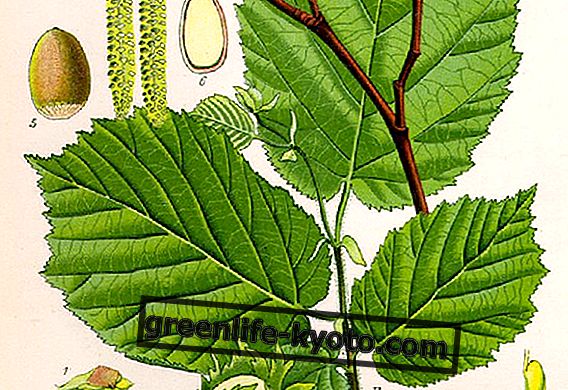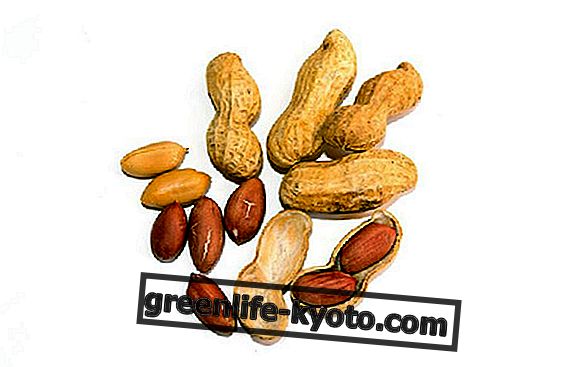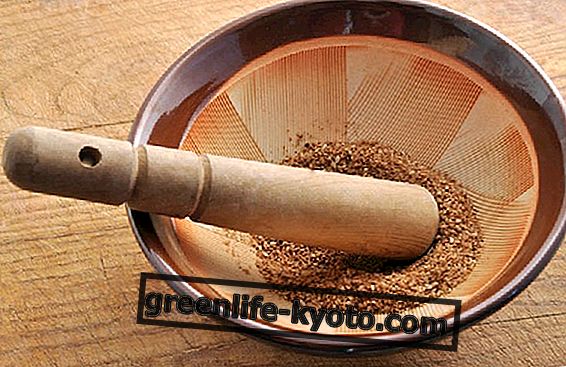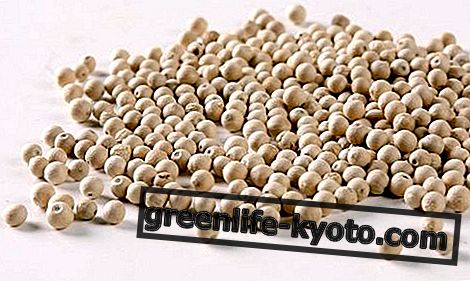
The Hazel ( Corylus avellana L.) belongs to the Corylaceae family, it is a bush shrub that can reach the size of a small tree.
Its name derives from the Greek "coryos" which means helmet and "avellana" which means of Avella (city of Campania). It is a common and spontaneous plant in Italian forests up to 1, 200-1, 300 meters high. Its leaves have a short and hairy petiole, they can be round, oval or oblong and sometimes partially lobed.
At the base they show a heart shape with one part larger than the other. The margin is serrated with hairs especially along the ribs of the lower page of the leaf. The male flowers are yellow and are composed in pendent ears called catkins; the females are green and at their apex a tuft of red stigmas emerges and singles or bunches of up to four flowers are found.
They appear on the plant at the end of winter, before the leaves. The buds are oval and flattened, large 5-7 mm. The fruit is an achene enclosed by a fringed shell that has a woody outer part and contains the seed inside.
The core in history
In the past, the Hazel tree was considered a symbol of healing, wisdom and communication. The messenger of the gods, Hermes, kept with him a stick of Hazel called caduceus. Later this stick in the hands of Asclepius, is wrapped in two snakes and still represents the symbol of medicine.
Also for the Celts this plant represents the tree of knowledge, improving the sensory activities, leading to a clarity and mental presence such as to make the magic formulas work: in fact, its wood was used to make magic wands but also those of dowsers. This tree was also a symbol of fertility and abundance and its leaves were fed to the animals to increase their fertility.
Some fields were bordered with hazel plants to keep out evil spirits and increase land productivity. In ancient times it was believed that the Hazel allowed to come into contact with the good spirits of nature and facilitated dreams falling asleep below.
Energetic message of the core
The Hazel allows us to come into contact with the dreaming part of us, helping us to see what makes us happier and happier. This tree teaches us to stay in the flow of our dreams and to identify those that belong to us more. The mind is active but lucid so as to allow greater contact with creativity and intuition.
These are precisely the tools that make us dream, overcoming the limits of rationality, identifying all the possibilities that would allow us a more fulfilling and full existence. The spirit of the Hazel pushes us to embrace these dreams, helps nourish them, attract and recognize the right opportunities for their realization. Promotes inspiration, increases mental elasticity and improves communication.
Parts used and collected
The fruits to be harvested are used at full maturity; leaves and bark in spring, flowers in February; the buds in the early spring.
Spagyric sign of the plant
In Spagyria, the Hazel has its primary planetary signature in Mercury and the secondary in Jupiter. In the zodiacal sign instead Virgo, Sagittarius and Aquarius appear.
These characteristics define the properties of the Hazel as a tonic plant of the venous circle, purifying the pancreas, slimming, anti-inflammatory bowel. His action in the emotional sphere will positively affect closed subjects towards the world and others. On the mental plane, it will work on the fear of being overburdened and of prevaricating.
Herbal uses
In the herbalist field it is used as a purifier, febrifuge, anti-inflammatory, astringent. Its gemmoderivato gives elasticity to the lung and liver tissues and is therefore indicated in case of asthma, bronchitis, liver failure and to restore the health of these organs.
Some preparations
For internal use a decoction is prepared with 2 gr of leaves in 100 ml of water. If you drink 2-3 cups a day to improve the functionality of the vascular system, for intestinal inflammation and as a purifier of the body.
For external use 5 g of bark are used in 100 ml of water to prepare a decoction. This is then applied by soaking the cotton or tissue tablets on the dilated superficial vessels with an astringent action.













